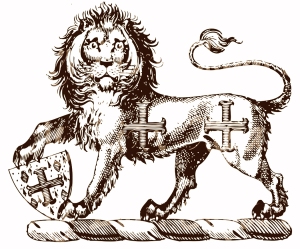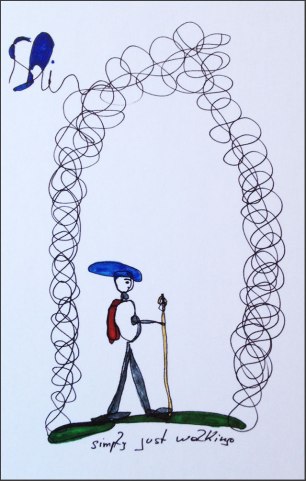
by Richard Nilsen
Alvin Toffler started us thinking about the churn of innovation in his 1970 book, Future Shock, which now may strike us a quaint because the rate of change has only gotten faster. We look back at 1970 and think — they were still plonking away with typewriters, and using telephones with wires attached.
Or, you watch a movie like Desk Set from 1957 with Spencer Tracy and Katharine Hepburn, which features a gigantic room-size computer named EMERAC and realize that most of us carry around a smart phone in our pockets that offers computing power at least a thousand times greater.
(It is said that when Apollo 11 went to the moon, the computing power on board was less than that of a Gameboy. It had about 64 kilobytes of memory and operated at a speed –if you can call it that — of 0.043 MHz.)
My own grandmother liked to remind us that she was born before the Wright brothers flew and lived to see those astronauts walk on the lunar surface. That is the stunning rate of change we have come to know and expect.
Time moves forward ever faster and technology advances exponentially, so we may forget that there is another force in culture that functions like dark matter to the dark energy pushing things outward: There is an inherent conservatism to culture. I don’t mean political conservatism, but a lingering of longstanding patterns of thought and behavior, usually unnoticed.

Choo Choo train
Think of a young child playing with his choo-choo train. It is likely the last person in his ancestry who ever actually saw a steam engine pulling a freight train was his great-grandparent. It has been more than 60 years since such locomotives had any role in commercial rail traffic. Yet, there is his mother, running the little wooden toy back and forth on the carpet, saying, “choo-choo, choo-choo.” There is delight on the child’s face.
Or consider that even wooden churches are as likely as not to have windows with pointed arches. The shape sings out sacredness, even though it no longer has any engineering or architectural function, as it did in the 12th century, when it was a stunning technological innovation.
I am writing on a keyboard that was created not for the computer, but the typewriter, and although there are no longer any metal keys to be tangled, I still punch out the letters on a QWERTY keyboard, designed to avoid those tangles.
How about the T. rex? From Jurassic Park to Jurassic World, this most iconic dinosaur is common currency in our culture. Every kid knows what it is and calls it by its Linnean name. There are two related persistences in this fact.

Turdus migratorius, American robin
First, there is the hangover of Medieval Latin — a vulgarized version of the classical language that was much expanded from its original form and subsumed many non-Roman words into its vocabulary, especially from Greek. All through the Middle Ages, Latin was the lingua franca for science, diplomacy, law and church. To be literate was to speak — or at least write — Latin. We still use Latin for the “scientific name” we use to hide the identity of the robin from the hoi polloi. It is Turdus migratorius. As we are allHomo sapiens and we seem never to escape intestinal distress from the E. coli bacteria.
The fact is, Latin is still the best way for botanists and zoologists to specify what animal or plant they are talking about. A French scientist can write to a Chinese scientist and they will know they mean the same thing.

Medieval lion
The second persistence is more pervasive. The scientific name, or binomen, that we give to animals and plants is just the low end of a hierarchy of classifications we give, so that Homo sapiens is just the genus and species name of an animal that falls under the family hominidae, the suborder haplorhini, the order of primates, the class mammalia, the phylum chordata in the kingdom of animalia. Our pet dog is also an animal, a chordate and a mammal, although he shunts off onto a trunk line called carnivora, and a family of canids, and a genus Canis, species lupus, subspecies familiaris. Cave canem.
This system of higher and lower classes is a vestige of one of the most central and persistent thought-habits of our culture. People — the hoi polloi, not the scientists — like to think of evolution as a ladder, upon which humankind stands on the highest rung. Below us, stretched out to the lower depths, are the lower forms of life. The dog is lower on the “evolutionary ladder” than we are, but the frog is lower than the dog, and the slug is lower than the frog.
Of course, there is no higher or lower in evolution, just changes better or more poorly adapted to changing local circumstances. But we nevertheless cannot help but think that we are the top of some hierarchy.
Even in demotic usage, we would easily say of a man who doesn’t whistle at a passing woman, that he is “more evolved” than the hardhat who does.
This is a relic of a persistent idea developed in the Middle Ages once called “The Great Chain of Being.” In that chain, everything in God’s creation was either higher or lower than something else. Parsing out these differences sometimes sounds like a lawyer weaseling his way to an acquittal for his client, or Bill Clinton asking what the definition of “is” is.
So, animals were higher on the chain than plants, who lorded it over rocks and minerals. People were above animals, angels above people and God above all. Amongst plants, the rose was considered the top form, and so was higher than, say, a dahlia, the same way a king was higher than a duke, higher than a yeoman, higher than a peasant. Men, of course, were superior to women and women to children. Among animals, it was usually the lion who was considered “king of the beasts.” Angels had their orders, too. You pick up two rocks from the ground and argue which of the two was superior to the other. It can get quite silly. Gold, by the way, was the top mineral, considered “noble,” because it didn’t rust.
Yet, the trope remains, buried in our culture and language like raisins in a scone. There it is, ensconced in religion, where for many fundamentalists, the husband has “dominion” over the wife.
It also sits on your computer, where a file sits under an application, but over a document — it is all hierarchical.
There are so many persistences in culture that it is hard to even recognize them as they pass. Neckties, for instance. What are they all about? They serve no actual function, yet we feel compelled to wear them when we want to be taken seriously. In America, we use feet and inches instead of meters, pounds instead of kilos, Fahrenheit instead of Celsius, quarts instead of liters. We like the measurements we feel familiar with. The metric system feels just as familiar to a Frenchman, who would be confused by an ounce of Roquefort cheese.
We keep pennies in our coinage, although they are useless. We just don’t want to give them up. We buy pink jammies for baby girls and blue for boys. Pagan ritual persists even in Christian holy days: Need I mention Christmas trees or Easter eggs?
How long can culture hang on? We wear our wedding rings on the fourth finger of our left hands because ancient Egyptians believed the vein in that hand ran directly to the heart. We divide the clock up into 12 and 24 hours, 360 degrees, because that is how the circle was first divided in ancient Mesopotamia. That’s how long this stuff can go on.
Although stage plays were divided into acts and movies aren’t, screenwriters still us the “three-act” template to write film scripts.
![INBOX thesalons@cox.net | Logout [Compose] [Check Mail] [Addresses] [Search] [Settings] [Help] Space used: 1% of 2 GB Read Message Reply Reply All Forward Move to: Prev | Next From: Richard Nilsen Add to Addresses Block Sender Date: Thursday, December 31, 2015 4:08 PM To: Thomas Houlon Add to Addresses Cc: Richard Nilsen Add to Addresses Subject: JPEGS for article Size: 5 MB Attachments: Boarding 747 1.jpg (774.1 KB) Choo Choo train cartoon.jpg (372.5 KB) Fixing greens South Africa.jpg (1805.6 KB) Lion medieval.jpg (1160.5 KB) Nieuport 27.jpg (266.5 KB) Turdus migratorius.jpg (940.2 KB) Open Attachment Boarding 747 1.jpg Open Needs no caption Open Attachment Choo Choo train cartoon.jpg Open Choo-choo train Open Attachment Fixing greens South Africa.jpg Open Fixing greens, South Africa](https://spiritofthesenses.files.wordpress.com/2015/12/fixing-greens-south-africa1.jpg?w=300&h=260)
Fixing greens, South Africa
When I was in South Africa, many years ago, I saw women outside mud huts preparing greens the same way they are still done in North Carolina. I heard them cleaning the sidewalks of the brand new shopping mall in Thohoyandou singing improvised call-and-response blues songs. It was enlightening for me to see how much African culture persists in American black culture.
Songs from our agricultural past, lauding springtime and the moon and June, make little sense to our urban present, where nocturnal lighting is more likely sodium vapor. We move from Dinah Shore to Taylor Swift, but we still maintain the three-minute song.
Superstitions are another persistence. In Navajo culture, there are even more superstitions and those more closely held, than the many we have in Anglo culture. I remember talking with my colleague at The Arizona Republic, Betty Reid, who was born and raised on the Reservation, about these superstitions. Betty is a thoroughly modern reporter and she laughed at the superstitions. No, she doesn’t believe in such things. It is the old people who hold on to them, she said. “But I do them, anyway.”
It is the integration of the old and new that may be the most fascinating. Think plastic walnut woodgrain.

Stirrup on biplane
When we board a 747, we do so from the left side of the plane. Why? Because cavalry officers were primarily right handed. The historical continuity is pretty clear. Because most people are right-handed, cavalry officers wore their sword and scabbards on their left side, to be easily drawn across their bodies. When they mounted their horses, they did so from the left side because the dangling swords would otherwise get in the way. When airplanes were first introduced to the military in World War I, they were called the “air cavalry.” They still are, when we discuss Army helicopters. The biplanes that served in World War I were thus traditionally boarded from the left side, as if they were flying horses. Many of those planes actually had stirrups for the pilot to mount as he climbed into the cockpit. This tradition of left-boarding continued even into the Korean War, when Sabre-Jet pilots climbed a detachable ladder — from the left side — into their cockpits. And we now get onto our jet flights from the same side.
Culture changes, but nobody wants to be caught with a beta version of untested software.
Richard Nilsen inspired many ideas and memories at the salons he presented through the years when he was an arts critic and movie, travel, and features writer at The Arizona Republic. A few years ago, Richard and his wife moved to North Carolina. We want to continue our connection with Richard and have asked him to be a regular contributor to the Spirit of the Senses Journal. We asked Richard to write short essays that were inspired by the salons.






![INBOX thesalons@cox.net | Logout [Compose] [Check Mail] [Addresses] [Search] [Settings] [Help] Space used: 1% of 2 GB Read Message Reply Reply All Forward Move to: Prev | Next From: Richard Nilsen Add to Addresses Block Sender Date: Thursday, December 31, 2015 4:08 PM To: Thomas Houlon Add to Addresses Cc: Richard Nilsen Add to Addresses Subject: JPEGS for article Size: 5 MB Attachments: Boarding 747 1.jpg (774.1 KB) Choo Choo train cartoon.jpg (372.5 KB) Fixing greens South Africa.jpg (1805.6 KB) Lion medieval.jpg (1160.5 KB) Nieuport 27.jpg (266.5 KB) Turdus migratorius.jpg (940.2 KB) Open Attachment Boarding 747 1.jpg Open Needs no caption Open Attachment Choo Choo train cartoon.jpg Open Choo-choo train Open Attachment Fixing greens South Africa.jpg Open Fixing greens, South Africa](https://spiritofthesenses.files.wordpress.com/2015/12/fixing-greens-south-africa1.jpg?w=300&h=260)
